Leap Day

(The Mittster takes our home state. Screen capture CNN.)
My fellow citizens, it is leap day in this Leap Year, only the 15th of these bonus days I have seen in my life. That is unlike all the other days, of which I have 60 or more in my personal log-book. There are many more elections than that, of course, since they happen with depressing regularity all over the country.
The reports from Michigan this morning are that the Mittster dunked the Fundamentalist by a few points, and touched him out in Arizona as well. That will not stop the debate, nor the efforts of the evangelical wing of the GOP to drag us kicking and screaming into the 19th Century.
You have to forgive me- the whole thing makes me dyspeptic. The President has lost command of his consonants and popped up in Detroit to talk to the UAW, an organization that protected me on the assembly line years ago at Local 206. You can see Mr. Obama’s remarks at:
http://www.youtube.com/watch?v=il6KmXwZO2o&feature=youtu.be&noredirect=1 <http://www.youtube.com/watch?v=il6KmXwZO2o&feature=youtu.be&noredirect=1>
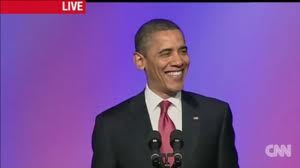
(Mr. Obama addresses the UAW in Detroit. Screen capture CNN.)
My concern is how his diction changes, depending on the audience he is addressing. The President asked us to “give it up” for Bob King, and that the best damn Transportation Secretary ever, Ray LaHood, was in the house. I would willingly do the former and fully acknowledge the later, but my concern here is where the language is going in this campaign.
If someone offered up a place to contribute to providing some hard “g’s” to the Democratic National Committee to restore the word “going” from its current “gonna” I would be much obliged. This campaign has months and months to go- not fifteen, thankfully, but too many. Please, let’s speak English.
As diverting as the primaries and the Presidential politics were this week, the best campaign news came out of Russia. Mr. Putin has a couple things going on. With his wealth of oil and gas to export, when prices go above $107 a barrel, Mr. Putin has the resources to make mischief.
Take Syria. Please.
That was, at least the contention of a colleague of mine from the last spike in oil prices. Now, Mr. Putin does not look so invulnerable. The people of Moscow and elsewhere are gingerly trying out the trappings of democracy in street protests, and obviously strong measures were called for.

(The Eyes Have It. Ya gotta trust a guy like this, just like George Bush did. Photo courtesy AFP.)
Seriously, though, Adam Osmayev, the Chechen ringleader, reportedly now has an unfortunate ailment that has caused the nails of the fingers and toes to drop away, and burns to appear around the genitals.
Adam confessed with sincere remorse to planning the assassination on the orders of Doku Umarov, the emir of the Islamist insurgency in the once break-away republic. Or an invisible seven-foot tall rabbit, whom Adam also referenced.
While the timing of the revelation by Kremlin-controlled media has been seen as an electoral ploy to boost Mr. Putin’s image as a guarantor of stability, battling shadowy foreign forces and seven-foot tall invisible rabbits in the final week before the election, Putin is expected to win. Or the Rabbit.
The plot was exposed after a blast in Odessa on 04 February, which was initially thought to be a domestic gas explosion. Experts remind us that spontaneous detonations of human flatulence are not uncommon in the region due to local dietary habits.
The only way our domestic campaign for the White House could get more surreal would be if we could import the Rabbit in time for Easter.
Doku Umarov says the Rabbit stands for civil liberty and sound fiscal policy. I don’t believe in the Easter Bunny, but it sounds like a policy on which I could leap.
Copyright 2012 Vic Socotra
www.vicsocotra.com
Clang Clang Clang
(The Harper Line of the old Detroit Street Rail System.)
I got up early today, thinking the primary election in Virginia was today. I want desperately to vote against somebody, and they let independents throw themselves at the fray here, so what the hell. Of course, they did not let Governor Perry or Speaker Gingrich or Governor Huntsman on the ballot, but maybe they knew something. Mitt Romney is in a desperate shoot-out with that strange Santorum fellow up in Michigan, and it is funny hearing Mitt tell all the stories about his youth in my hometown of Detroit. We share a lot of stuff, though probably not Bob Seger or the Motor City Madman, Ted Nugent.
I have been waiting for the other shoe to drop on the bankruptcy of Detroit, and maybe they have averted the immediate crisis. There is talk about new infrastructure projects in the bedraggled and once-great city. A new People Mover light rail system has been proposed to take tourists up Woodward is one of them, which I suspect is desperately wrong-headed, but I have a stack of tokens for the Detroit trolley, and am generally in favor of good works that I do not have to personally pay for.
Anyway, my Left Coast Attorney sent me a cheerful note with a link to a video of the new retro San Diego Trolley. It appears to be something out of the 1950s- way cool styling, and it runs on the existing north-south track that connects the most lovely city in America.
http://www.youtube.com/watch?v=HMVyUaAG3f4
It sure brought back some memories for this Motor City kid, and tripped me off into a nostalgia binge that trumped the concern over the Israelis and the Iranians and the mess in Afghanistan.
The fleet of Detroit overhead-wire trolleys is a subject of great nostalgia in America’s first throw-away metropolis. The conspiracy theory made famous in “Who Killed Roger Rabbit” is blamed for the death of the Detroit Street Railway system, which wound up with non-tracked but over-head-line electric powered buses before final conversion to buses.
(Roger Rabbit’s long-suffering wife, Jessica. She was in favor of Trolleys. Photo Disney.)
There is much more to it, of course. Detroit’s system started with horse-drawn trolleys in the Civil War. At the beginning of the Gay Nineties, the horse-car riding public included just about everybody in town, but the electrification movement was all the rage, and technology was transforming the urban landscape. There was a time when manure was a big part of pedestrian life, and I am just as happy it is not now.
The Detroit Electrical Works inked a contract to electrify the Jefferson Avenue line of the Citizens Railway, though enthusiasm was not universal. Remember the fight between Edison’s Direct Current and Tesla’s Alternating Current? Some reasonable citizens considered the idea of stringing naked, lightning-bearing copper wires above the middle of the street to be outlandish and dangerous. in the case of Edison’s DC scheme, they were quite right.
(Thomas Alva Edison’s DC power was a dog, but he beat Nikola Tesla in the end.)
Ironic, really, that Detroit Edison was the company where Mom would take me to exchange lightbulbs which operated on Tesla’s AC, and Edison’s Menlo Park Lab was moved from New Jersey to Dearborn’s Greenfield Village in tribute. Tesla, except for an electric car, is largely forgotten.
Anyway, misgivings notwithstanding, poles and lines for the great experiment went in place without incident, and the transition was a success, cutting precious minutes off the commute from Downtown. Detroiters went wild with the clang-clang-clang of the new system.
By 1910, though, the bloom was off the rose. The two major independent street railway systems had been folded together with smaller concerns into a single-traction combine, the Detroit United Railways (DUR). The cartel was owned largely by Montreal stockholders and New York banking interest- neither known for their civic altruism. Complaints about inadequate service and monopoly exploitation swelled, and it was a common sight to see hardy winter-time passengers clinging to the outside of a trolley for the duration of their commute.
Detroiters eventually voted to buy out the DUR in a pair of elections in 1920 and 1921 and constructed more than city miles of new track. To do so, the City Council jailed the DUR superintendent while they laid tracks over his line. The DUR track and cars were purchased for $19,850,000, and the new city-owned utility was re-named the Detroit Street Railway (DSR). Labor disputes quickly arose.
Remember the term “feather bedding?” It has a certain nostalgia as well, when there used to be powerful Unions in America. In the railroad business of the time (Grandpa Socotra was an engineer) it was a common term for the position of Fireman on trains that were now powered by oil-fired steam, not shoveled coal. The unions insisted that the extra crewman was necessary for safety and management claimed it was wasteful and profit-killing. The “One Man Car” was a major issue from 1938 until the demise of the system.
When Detroit killed trolley service in favor of diesel buses on April 7, 1956, I was almost ready for kindergarten. The former fleet of Detroit were auctioned off and became the core of the system in Mexico City.
The last of the Detroit trolley cars ran there until 1984. On September 19, 1985, the remaining cars were undergoing restoration when an 8.1 earthquake on the Richter scale shook the city like terrier does a rat. The repair facility collapsed and crushed the remaining cars. Salvageable parts from the destroyed cars were used to build 17 new trolleys, but they are no longer in service.
(The last Detroit Street Rail Trolley, April 7, 1956.)
There were some upsides in the system, which San Diegans are enjoying in the video. Old Detroiters remember that the streetcars were more pleasant to ride than buses. They don’t lurch (electric engine torque is smooth) and they do not swerve to change lanes. There were no fumes from gasoline or diesel engines.
The downside of the electric system (as the incredibly expensive and short-range Chevy Volt and Nissan Leaf are demonstrating) is that streetcars generally are more expensive to run than diesel buses. Track and overhead wire maintenance ate up both manpower and dollars. While the individual streetcars are less maintenance-intense than buses (electric motors are rather simple things), the cost of the infrastructure is what killed the trolleys.
There was romance, and there was tradition in the old system, though.
The DUR even had a dedicated funeral car, introduced in 1901. Detroit was one of a few cities to have such a car, and it was booked solid. It hauled anybody who had been anybody to the cemetery. The funeral car was black, with no name or number, and had an opening near the front to receive the casket. It stayed in service from 1901 to 1917. Each of the large cemeteries of the time maintained a loop of track to accommodate the car. Mourners rode right along with the corpse, coffin and family in front, guests in the rear.
Along with the required infrastructure, streetcars take up a lot of street. “Safety Islands” are required to permit riders to board and debark the trolley, and that increases the number of auto-pedestrian encounters.
Henry Barnes, the legendary traffic engineer, said in his autobiography that he “…often said I didn’t mind street cars except for the fact that they ran on the street.”
Electric light rail transit works most efficiently on dedicated right-of-way, like the one in San Diego. Light rail in the street (either the center or the side) has conflicts with automobiles using the streets. the inherent conflict in the transformation of trolley and inter-urban systems is the genesis of the conspiracy, that the evil auto companies bought up the rights of way and deliberately destroyed the trolley system.
It was the force of the market, and the rise of disposable income that enable the suburban post-war sprawl. In the case of Detroit, there was a racial component to the flight of the middle class from the city. Henry Barnes was the man most singularly responsible for the system we have today. He lived the crucial transition period, 1907-1968, and started as the traffic engineer in Flint, Michigan, moving on through Denver and Baltimore, and finally arriving as Traffic Commissioner in the most snarled city in America- New York.
(Baltimore pedestrians doing “The Barnes Dance” in the 1950s. All vehicles had to yield and people could walk anywhere they wanted. Photo Maryland Historical Society.)
Barnes represents the pivot point in the march of progress that enabled citizens to vote with their pocketbooks and escape the clogged post-war city that my folks moved to in 1948. Detroit was bursting at the seams. The flood of migration from the South to work at the plants of the Arsenal of Democracy made housing scarce and tensions between the ethnic enclaves sharp.
He retired after a public and ugly fight with Robert Moses, the titan of Manhattan development. Between the two, they transformed the Big Apple, and made their mark to one degree or another on the urban landscape of the post war era.
(The astonishing Robert Moses, the un-elected King of Manhattan.)
Their works remain extremely controversial. Supporters believe Moses applied Barne’s methodology to make the city viable for the 21st century by creating a popular and enduring infrastructure. Critics point out that (like Detroit and LA) that the march of freeways displaced hundreds of thousands of residents in the old cities and destroyed traditional neighborhoods in preference to the speeding autos.
Coming back from Joint Base Bolling-Anacostia yesterday, I saw that one of the last battles of the Barnes-Moses urban wars in being completed. Local activists here had staged a desperate and bitter fight to prevent the completion of the cross-town freeway, which ended at the Anacostia River, dumping thousands of Maryland-bound motorists into street lights at Pennsylvania and New York Avenues. It is a nightmare and always has been. The project, along with the massive new headquarters of DHS were shovel-ready projects and the linkage is now almost complete. The Neighborhoods destroyed were ghost towns, anyway, and the activists now prefer the jobs.
They say that Robert Moses is singlehandedly responsible for the ruin of the South Bronx, the death of Coney Island and the departure of the Brooklyn Dodgers and the New York Giants, and the general decline of public transport through neglect in the years after his passing.
Maybe it is all true. But his one-time partner Henry Barnes knew how to make traffic move, as well as how to kill a downtown urban core. He looked at the trollies this way:
- “You can’t be a nice guy and solve traffic”
- “As things stood now, a downtown shopper needed a four-leaf clover, a voodoo charm, and a St. Christopher’s medal to make it in one piece from one curbstone to the other”
- “In this business there are very few problems that can’t be solved with some yellow paint and a little bit of common sense.”
This is great nostalgia for the trolley in San Diego, where the nature of the light rail system makes it possible with a single north-south axis. Detroit, broke as it is, contemplates something similar: a new dedicated light rail system on the Woodward Avenue corridor from the Hart Plaza downtown on the River to the city limit at Eight Mile. I have no idea who would be going to either place, unless it was in an armored Escalade, but it might be a great idea.
I don’t think it is going to happen, but you never know, you know? Clang clang clang.
(The Detroit People Mover in front of the RenCen. Photo City of Detroit.)
Copyright 2012 Vic Socotra
www.vicsocotra.com
Security

(National Security Certified cruiser in the rolling hills of Virginia. Photo Socotra.)
So, I wandered out of the front door of Refuge Farm yesterday morning. The light was coming up over the pastures, and the weather had changed. Someone had knocked the sky clear of clouds and the last brilliant stars were fading as the world came alive and awake again.
I needed the coffee, but that is par for this course, anyway.
I sipped some of the last of the pot in a travel cup as the Bluesmobile hurtled down Rt 29 mostly on its own direction toward the rendezvous at our office at Charlottesville.
Thirty miles down the fine four-lane road, I saw the bulk of the first building I had helped throw up against the Virginia sky. You have to know what you are looking for, since there is no advertising or logo on the building for all the obvious reasons. It had been necessary to replace the old facility in the former Federal Court House downtown by the University due to overcrowding by a burgeoning government. While it was ‘in the program’ when I had the chance to run it, I always felt a certain proprietary interest in the vast expanse of glass and brick.
The bulk of the Ground Intelligence Center concealed the other, newer building that the Agency had dropped out of the sky. My pal Patrick had brought me on task to Support the Base Reallocation and Closure round of 2005 as a private contractor in the weird time just after I retired from formal government service.
We were the Agency reps to the big reorganization that Uncle Don Rumsfeld intended to use as part of his reinvention of the Defense business. In the opening remarks of the Intelligence Panel, we heard the plea of a sister agency for a new campus to replace the odd assortment of ramshackle facilities that it currently occupied.
Patrick looked over at me across the big conference table surrounded by representatives from the other parties in the fractious Intelligence Community.
My eyes widened as I saw the play- if you have attended enough of these endless Government meetings, you can tell when something unusual (and productive) is about to happen. It was a revelation: Patrick intended to support the requirement of our sister agency on the proviso that they supported one for ours- you know, a continuity of government site. Those were all the rage in the post-9/11 world, even if people seem to have forgotten how nice it is to have a place to go work if people have blown up your usual office.
I was thinking about that as I wheeled the police cruiser around the corner to Lewis & Clark Drive, and up to the office complex that my company shares with the other usual suspects in the defense contracting business.
I was donating a Sunday to the delivery of a complex process. The Government requirement was a secret. I mean, it is not one of those things that is a big secret- like the coming war with Iran- if you thought a bit about what is going on, but the Government said it was a secret, and if you make your living off this convoluted process, you take them seriously and at their word.
That is why Kristy was there in her second trimester to unlock her safe and hand over the double-wrapped packages so I could get them from central Virginia to the placid flat lands at Joint Base Bolling-Anacostia, and get a toe-hold in a new mission area.
That meant a moderate road trip, and contrary to what the meteorologists had predicted, a dynamite sky and cool but not chill temperatures. It would have been nice to just stay at the farm, but there was a mission to accomplish.
I stopped at the grocery store and gas station before the transfer, so I would not have to leave the material unattended in the car. I was counting on not having a break-down- that would be problematic in the extreme.
Kristy was glad to get the packages off her plate and into the trunk of the Bluesmobile. The whole process gets complicated when the Government is soliciting a response to a secret requirement. They do all their business on a super-secure communications system whose terminals all end in Government facilities. That adds to the excitement in trying to even read what they are asking for, much less the complications of writing a response on computers certified to process classified information in a facility accredited to store the stuff.
Like the trunk of the Bluesmobile. I produced my courier badge from the sheaf of credentials I wear on the lanyard around my neck and countersigned Kristy’s custody log, and then I was responsible for the small part of the National Security that would fit in the trunk of the police car. I gave her a wave and then floored it out of the parking lot, and back onto 29 for the hundred-mile race to the capital.
100-miles away and upwind from the Capital is the magic number for COOP sites, by the way, and that is why all this stuff is down in the gentle rolling hills of north central Virginia.
I wished I could get rid of the stuff immediately, but no one was working at the Government, or at least the contracting end of it, and so I had to stop at the office and secure the boxes in my safe. The chances of anyone breaking into the car or my apartment were so slim as to be ludicrous, but like I said, we take the government seriously, and you never know when you will be summoned for a polygraph inquisition, and you may as well just follow the regulations.
The National Industrial Security Policy was very much on my mind as I guided the big blue car down into the garage under the office and slid it into the first vacant spot. I used the key fob to access the after-hours pad on the elevator, swiped by company badge on the card reader at the front door, and used the special key to enter the room we have had accredited for storage of classified material. I filled out the logs, reversed the magnetic sign from “Closed” to “Open,” and spun the X-09 lock on the level-5 approved safe.

(X-09 high security lock of the type affixed to my Level 5 GSA-approved security safe.)
It is handy. We can’t keep SCI-level material in it, of course, but it was fine for plain garden-variety Secret like the proposal. The safe is certified, and could also be used for storage of Federal Evidence, weapons & ammunition, narcotics, access control keys and documents like these. I saw no weapons or ammunition, and someone must have cleaned out the cool other stuff.
I chunked the boxes into the top and middle drawers and reversed the process, spinning the lock closed and erasing the combination, reversing the magnet to “closed,” and retraced my steps to the elevator and the basement.
Clear of any national security encumbering, I drove home, not caring now whether or not I had the car in constant line-of-site. When I got upstairs, I pulled out my copy of Neil Gaiman’s surreal novel ‘American Gods’ and went out on the balcony to read and doze in the sun.
Like Gaiman’s other stuff, this is filled with the curious intersecting with the miraculous. I was opening the book to the place I had marked the last time I had a minute to do almost nothing, and realized that I was not at all sure what was the more surreal: the book, or life?
Copyright 2012 Vic Socotra
www.vicsocotra.com
Homeland Security
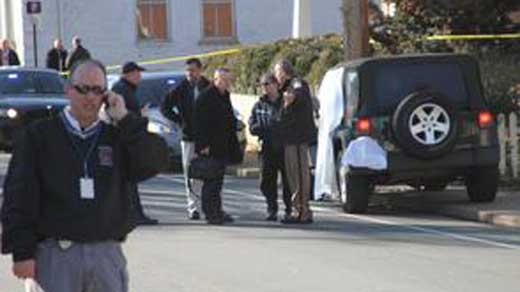
(Law enforcement says an un-armed 54-year-old woman drove off with a police officer’s arm trapped in the window. Hey, wait, this is a Jeep with side curtains. How does that work? Photo Courtesy of StarExponent.com)
I wonder if I can really walk down here, if I needed to?
The words flying around the capital- when we can separate Greek melt-downs from carbon dioxide catastrophe to the looming war with Iran which appears inevitable- makes me look nervously to the exit.
I am down at the farm, on a mission of urgency for the company. I cleared the junk out of the mailbox by the quiet country road and read the lead story in the local rag with amazement. Above the fold on the front page was an account of the investigation of a fatal police shooting in Culpeper. They will have a special prosecutor, the paper says.
There is some nasty stuff that happens in the country, methamphetamine-driven, for the most part, but this story has nothing of that about it. It is a straightforward matter of a police shooting of a citizen.
Admiral Herb “The Superb” Browne used to tell us in the morning meeting- normally the Monday meeting after the antics of our boys and girls in Tijuana- that nothing good happens after midnight. Mayor Chip Coleman of Culpeper agrees. He is asking citizens to be patient while the Virginia State Police investigate the shooting. I am a little anxious about it.
Here is the official story: State police say an unidentified Culpeper officer shot 54-year-old Patricia A. Cook on Feb. 9 after she drove off with his arm trapped in her vehicle’s window and refused his orders to stop. Patricia died at the scene.
The shooting occurred after the officer responded to a report of a suspicious woman in a vehicle in a (church) parking lot late at night. She reportedly rolled up the window, trapping the officer’s arm, and then drove off, dragging him along, hence the application of deadly force at point blank range with the Glock .40.
Look at the picture above, gentle readers. The Jeep has a soft top.

I mean, check out the detail above (on a different vehicle, of course) and tell me how the poor woman managed to roll up the driver’s side window fast enough to trap anything. I don’t have a lot of confidence in the story as it is being told.
This is a microcosm of my distrust with the instruments of the State. In the end, this representative of the government got himself all hot and bothered and murdered a citizen in the name of the state. He is not going to serve a day in jail. Everyone deeply regrets the incident.
Homeland Security at work? Or just a panicked officer after midnight?
It does not seem like we are a lot safer here at home after a decade of Homeland Security. Given the consensus of hysteria this morning about the coming war with Iran, I am left with the feeling that we aren’t a lot more secure overseas, either.
Here comes the third war in a decade. What did I get my kids into?
If I have to walk down to the farm to get away from the capital one of these days, I will definitely have my papers in order, try not to loiter suspiciously and tread lightly.
Copyright 2012 Vic Socotra
www.vicsocotra.com
Two Out of Three Ain’t Bad
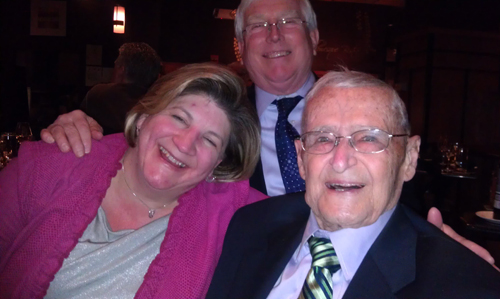
Mac with out of town admirers, P&T. Photo courtesy The Lovely Bea.
We were at Willow. The folks up and down the bar from the Amen Corner were a shifting lot, but the core group was there. Left Coast Guy was talking to Old Jim. The Lovely Bea was snapping pictures, and Jon-no-H was standing in fashionable dishabille, his bow tie elegant but jacket draped across a chair.
There was a new face behind the bar, that of an athletic Hispanic guy with dark good looks and an efficient manner. He joined Liz-with-an-S and Jasper in trying to meet the needs of the thirsty happy hour crowd. I was having a hell of a time with his name. I finally asked him to write it down, and he carefully wrote “Gerber,” like the baby-food, but pronounced, as best I could tell, Gaaar-Bear. I figured I could work with it, if he could.
Patrick and Tina blew through the crowd. They were in from Annapolis, Socotra tourists in a way. They are leaving the area for life in the Rockies, and wanted to catch up with the Admiral while they could. Jon-no-H was surprised when they called him that, but we all seem to be getting used to being characters in an on-going mini-series.
P&T are part of Admiral Mac’s growing fan club.
Mac himself was seated next to me, enormously satisfied with the consistency of his second Sierra Nevada lager, which Liz-S had thoughtfully stocked just for him.
The manila envelope on the bar in front of me, next to the tulip glass half-full of a modest but tasty Pinot Grigio, that held the obituaries and the copy of Arlington Magazine with the article about executive chef Tracy O’Grady was nearly covered with random notes and quotes.
“So, the most famous picture of world War II went through you for release,” I said in wonder.
“Yes,” said Mac briskly. “Certainly did in my capacity as security review for PubInfo. Nothing classified in the picture, and so it went on the wire and was in hundreds of newspapers the next day.”
“As the most famous picture of the biggest conflict in Human History, arguably, it might be the most significant picture ever taken.”
“Until the next one,” said Mac with a smile.
“It is incredible,” I said. “I just wanted to track down the story of the two Japanese super battleships. The other night you said Station HYPO had a role in sinking them both.”
“That is not exactly what I said. I said we got two of them. There were three.”
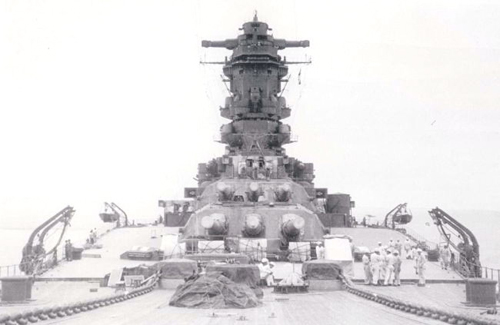
IJN Musashi under construction, 1940.
“I looked it up, Admiral. There were only two ships of the Yamato-class super dreadnaught- her and the Musashi.”
“That is right, as far as it goes, but therein lies the story. There was a third hull of the class, but they altered the design to make it an aircraft carrier after the loss at Midway. It was to be a huge ship, capable of ferrying aircraft, parts and pilots to other fast carrier operating forward. She was the Shinano.” Which he then spelled for me, a great aid when I look at the scrambled notes over a cup of steaming hot Dazbog-brand Russian roast coffee the next morning.
“These ships were post-Treaty of Washington ships, right?” I asked.
“Yes. They were enormous- and we knew nothing about them.”
“Even with American officers like Joe Rochefort and Eddie Layton studying the Japanese language there?”
“They were very clever about hanging bamboo curtains around the building ways at Nagasaki and Yokosuka when they abandoned the restrictions of the Washington Naval Treaty. They built them under great secrecy, starting in 1937.”
“I remember the ratio from a college course I took,” I said. “5:5:3 for the Brits, us and the Japanese.”
“And 2 and 2 for the French and Italians,” said Mac with a smile. “Not that it had anything to do with the Pacific War, except that most of the ships in the early days were still the ones limited to 35,000 tons and equipped with main batteries that could not exceed 16-inches.”
“How big were the Yamato hulls?” I asked.
Mac wrinkled his brow in concentration. “Massive. They were at least 850 feet, length overall, and more than 70,000 tons. That is longer than our Essex-class fleet carriers were, and twice the displacement.”
“Jesus. That is huge.”
“Oh, yes. We discovered later that the launch of Musashi was such a massive effort that when the hull slid into the water it created a small Tsunami. They covered the whole thing by staging a city-wide air raid drill in Nagasaki to keep everyone in their homes.”
“So when did HYPO identify them?” I asked, putting down my pen and taking a sip of wine.
“Some time late in 1942, I think. Mushasi was handed over to the Navy for commissioning in June or something. We started to identify the call-signs in the JN-25 radio traffic and finally correlated them to the super battleships. We were not spoiled like you guys were by having satellite imagery of the ports and building halls.”
“That did make a lot of things easier,” I said, picking up the pen. “But the Russians were pretty cagey about building their submarines in covered building halls.”
“They have to come out sooner or later. And that was the issue with the Yamato-class ships. They spent most of their operational lives in port at Brunei, Truk Atoll and Kure.”
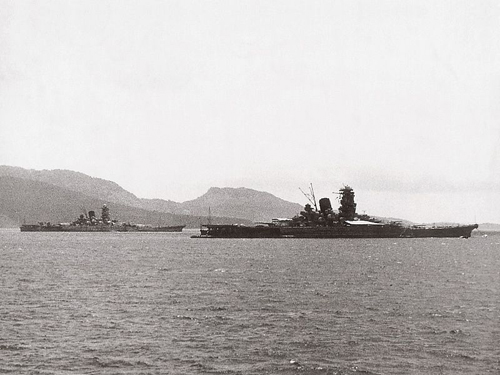
“The Germans had the same problem with the pocket battleship Tirpitz. She got bottled up in Norway and never accomplished anything with her.”
“No, not quite true. The very existence of those ships made us consider them a threat at any time.”
“But they were dinosaurs, right? Even if the main guns could shoot for 35 miles, that is nothing compared to the range of carrier aviation.”
Mac nodded. “And after Midway and then the Great Marianas Turkey Shoot, the IJN was essentially out of the carrier business. They threw Musashi into the Battle of Leyte Gulf, and Naval air sank her when she was in the San Bernadino Strait as part of Admiral Kurita’s Center Force.”
“Did HYPO provide locating data on her?”
Mac shook his head. “I am sure we helped with Kurita’s general intent, but the Airdales got her dead to rights. They sank her on 24 October.”
“So that is one that HYPO can’t take credit for.”
“Yes, but we had the new carrier nailed. She was built in Yokosuka, and we decrypted the OpOrder directing her to proceed to the Inland Sea for fitting out.”
“The drydock in Yoko where they built her was still being used for US Aircraft carriers when I was there. It was that big,” I said. “Ma Midway could fit right in it.”
Mac nodded, and sipped his beer. “We managed to get her navigation plan to Archerfish, a fleet boat that was providing SAR services for the bomber crews that had to ditch. There were no raids scheduled that day, and Joe Enright managed to get six torpedoes into Shinano. It was the largest aircraft carrier ever sunk, and only ten days after her commissioning. Joe got the Navy Cross for that one.”
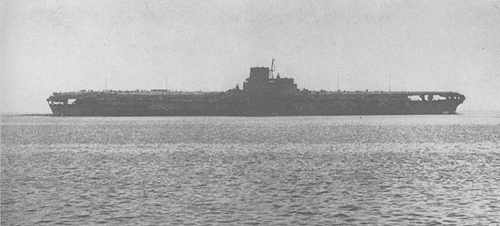
IJN Shinano on sea trials.
“Ok,” I said. “So HYPO was one for two. Did you identify the plans for Yamato?”
“Yep.” Mac took a sip of Sierra Nevada. “We invaded Okinawa on April Fool’s Day 1945. The Japanese response was to organize Operation Ten-Go, a suicide mission for Yamato. We had her voyage instructions, which were for a one-way mission. She only had enough fuel to get down to the island from Kure. Then she was supposed to run herself aground as an unsinkable gun emplacement and fight to the end.”
“Didn’t work out that way,” I said and drained my glass of Pino Grigio.
“No, it didn’t. HYPO was able to provide the course and timing of her transit and two subs picked her up near the Bungo Strait. They reported contact to the carrier strike force, since they could not keep up with Yamato and her escorts. They were zig-zagging at twenty-two knots. Admiral Marc Mitscher’s group launched nearly three hundred aircraft and caught her about mid-day on the 7th of April.”
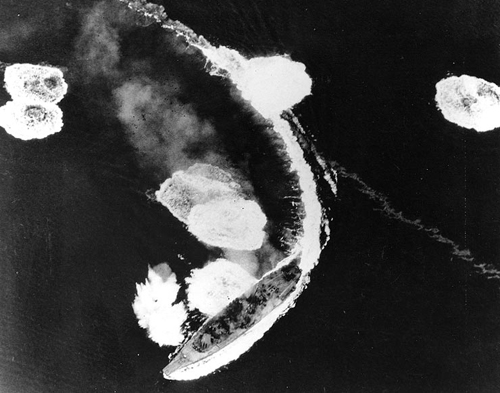
The 72,000-tonYamato, pride of the Imperial Fleet, maneuvers evasively. One fire can be observed amidships from previous attacks, but at this point no list has developed. Photographed from a USS Yorktown (CV-10) plane. Collection of Fleet Admiral Chester W. Nimitz, USN.
“Three hundred aircraft?” I whistled. “Our whole airwing on Forrestal only had around seventy planes. That is impressive.”
“It was. And that was the end of the Yamato, the first and last of her sisters.”
“She is still a popular cultural icon in Japan,” I said. “A symbol of advanced technical capabilities.”
“The word ‘Yamato’ is sometimes used as a poetic name for Japan. So, in a way, the end of the super-battleship Yamato is a metaphor for the end of the Empire of Japan.”
“It is sort of like that Meatloaf song,” I said, waving to get GaaarBears attention and maybe just a finger or two of wine to finish out the session.
Mac looked puzzled. “Meatloaf?”
“Sorry, Admiral. I forget sometimes we are from different eras. Meatloaf was a huge rock star- literally- back in the late seventies when I came into the Navy. His biggest song was “Two out of three ain’t bad.”
Mac contemplated that for a moment and then nodded in agreement. “No, I suppose it’s not, is it?”
Super Battleship-sized rocker Meat Loaf in his 1977 album.
Copyright 2012 Vic Socotra
www.vicsocotra.com
Flags of Suribachi
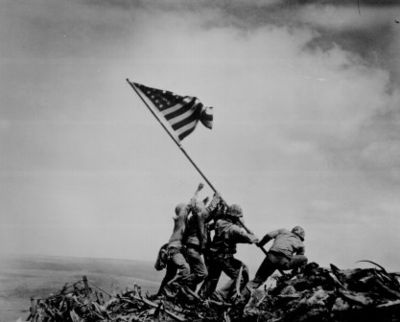
Joe Rosenthal's iconic image of raising the flag on Iwo Jima. But wait, there is more! Photo AP
My God, what a day. I had a pre-noon meeting out in Fairfax, and the drive was a pleasure. Daffodils were poking up along I-66 and if the trees have not assumed a certain sheen of light green, the time cannot be far off.
The temperature rose slowly through the day and it felt magnificent to be alive. The back of this winter appears to be broken, and there was a spring in my step as I walked over to Willow to meet Mac and Left Coast Guy. LCG was in town checking on a contract, and I was looking forward to catching up.
Liz-with-and-S was enjoying a last smoke by the back door and I walked back to chat before entering the bar. We made some Spring-like resolutions to get serious about the legal flash cards to help her prepare for the Virginia Bar exam later in the year. There is nothing like fine points on Constitutional Law and Torts to spice up a Happy Hour at Willow.
Not that anyone seems to be paying much attention to the Constitution these days, except as a point of departure for our brave new world, but what the hell.
We parted, Liz-S to enter through the back entrance, and me to enter in the front to assume our appointed roles.
Left Coast Guy was sitting next to Older Jim when I arrived, just minutes before Mac.
I was a little disorganized- go figure- but I don’t like to keep the Admiral waiting. I had printed the Wikipedia articles on the Japanese super battlewagons IJN Musashi and Yamato as aids to ask questions, but they were still sitting on the printer at the office. Mac had told me that Mac’s code-breaking unit at Station HYPO was involved in the sinking of both, and naturally I wanted to know more.
It sort of worked out that way, though as usual there were some rabbit holes to duck down along the way. I will get to the rest of that presently, though perhaps not this morning. There may be a return engagement at Willow this evening if Mac feels up to it.
Mac’s War had been in the background all day.
Someone out there in internet-land had realized that it was the anniversary of the flag raising on Mount Suribachi, and started a viral dissemination of a series of images taken by photo-hound Joe Rosenthal. The five images depicted the first and second American flags being raised on the height above the porkchop-shaped volcanic island of Iwo Jima.
The images came without commentary, but the shots of the Marines included the iconic image that became the Marine Memorial that looms next to Route 50 in Rosslyn. It was pretty amazing. I must have got it in the e-mail four or five times as vets recycled it. I sent the files to Mac in the afternoon, 67 years to the day, I thought.
The battle for the island had been raging for four days when the Jarheads seized the peak, and the fight would go on for another month before the island was secured. The SeaBees would start working on the airstrip before the last Japanese troops were mopped up.
Mac would have been on Guam at the time, I thought, with Fleet Admiral Nimitz’s staff forward. I made a mental note to ask him about it. It was the relatively swift collapse of Japanese forces in the Philippines that advanced the timing of the landings on the first Japanese soil to be occupied. Halfway between Japan and the Marianas, Iwo had been an early warning station to detect the in-bound heavy bomber streams headed for Honshu.
That was over, by the time the flag went up.
Mac was clutching a manila envelope when he arrived, and he slapped it down on the bar as Liz-S appeared to ask him his choice of poison.
“Did you re-stock the Sierra Nevada?” he asked hopefully. Liz-S nodded, her chestnut ponytail dancing over her slim shoulders. “Good. I will take one. I have a case of it back at The Madison,” he declared.
“You must be feeling better,” I said.
“Best in years,” he said. “We need to figure out the arrangements for the trip to Hawaii this summer.”
Then he began to dig through the envelope. He reads the obituaries in the Post religiously. I guess it is kind of a sport at his age, keeping track of those who leave the dance before he does. We discussed whether to run an appreciation of the life of a line officer who had been in the corps of Attaches, though not an intelligence officer, and the spouse of another retired officer who had pulled the plug completely on the community once retired. “Disappeared completely,” said Mac, “Though I understand he still lives in Vienna.”
“I can understand why some folks would want to just get away from the whole thing. But I can’t seem to let it go. Did you get the pictures I sent you from Iwo Jima?”
“Oh my, yes. That is a story.”
“What do you mean?” I asked.
“I was on Guam with Admiral Nimitz,” he said, taking a sip of refreshing Sierra Nevada.
“Right,” I said, starting to scrawl notes on the outside of the manila envelope.
“You were on Nimitz Hill.” Jasper was behind the bar, and his ears pricked up at the mention of his home on Guam. “That makes both of you guys the locals.”
Mac smiled. “Yes. Although I was a temporary Guamanian. But I had a variety of duties in addition to Estimates and Current Intelligence. I was also the censor for the pictures taken by the war correspondents. We called it PubInfo- Public Information. What you call Public Affairs Officers today. I had to review all the outgoing pictures to determine if they contained any classified information. “
“Wait a minute- you released the picture of the Marines raising the flag?”
Mac nodded. “Yes. Joe Rosenthal sent his film to Guam to be developed. He did not see them while he was on Iwo Jima. Not like today with your digital cameras and instant gratification.”
“So you were one of the first to see the most famous image of the war?”
“Yep. I think the photo tech was a guy named George- George Tiaden, of Minnesota.”
“What did you think?”
Mac pursed his lips. “I thought it was powerful. I told George it was one for the ages- maybe the best photograph of the war. Once I gave it the OK, it was distributed by Associated Press within eighteen hours after Rosenthal shot it.”
“That is an astonishingly fast turnaround time for those days,” I said. “Mac, you are incredible,” I said, taking a sip of happy Hour White.
The Admiral just smiled. There is a lot more, of course, but one astonishing thing at a time, you know?
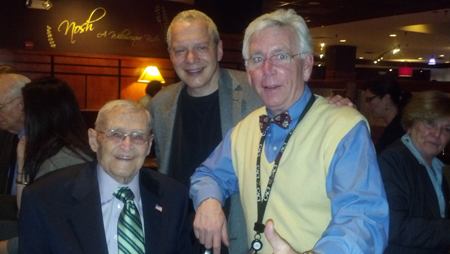
Copyright 2012 Vic Socotra
www.vicsocotra.com
Sixty-Nine
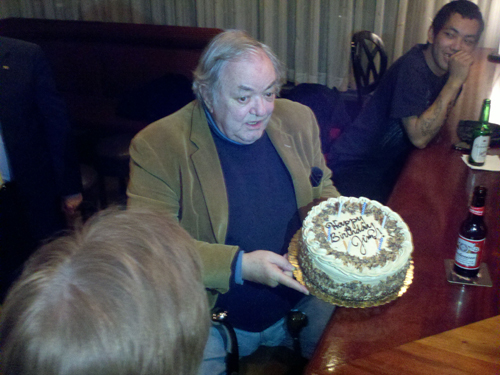
Old Jim displays one of Kate Jansen’s signature cakes at Willow commemorating his sixty-ninth birthday and the start of his 70th year on the planet. Photo Socotra.
It is good to be back from the road, or maybe better said, I am just getting over the feeling that I should have just kept going. Re-integrating into life in Arlington took a day or so- and I was plodding through some desk-work when I got an e-note from Short Hair Mike, who reminded me that it was Old Jim’s sixty-ninth birthday.
“Do you want to chip in for a gift?” he wrote.
I responded that of course I did. “I was class of sixty-nine myself,” I wrote back. “I will slip you some cash at Willow later on if that is OK”
He said that was fine, and I asked: “What are we going to get him?”
“Well, you know he uses that bulldog cane, right?”
“Sure. He is a dead ringer for the fierce head of the dog carved into the handle.”
“Well, I found something better than that.”
“What is it?”
“A cane made out of a bull’s reproductive organ.”

“No shit,” I wrote in wonder. “How on earth do they do that?”
“Easy. Take a bull’s dick, hang it over a pipe with the big end up and let it dry like a stick.”
“Works for me.” I hung up and went back to trying to craft a weekly report on a week where I had been mostly elsewhere.
I was surprised to get a call later from Old Jim himself a little before five, wondering if I would be stopping by the bar after work. He was thinking perhaps he might eschew his usual spot at The Amen Corner if I wasn’t going to be there.
I thought he might be a little sensitive about the birthday, and I responded that “I am back, Jim, and have missed the place. Of course I will be there.” I did not mention that Short Hair Mike would be there with pretty Jamie, and the Lovely Bea was excited, and Jon-no-H and John-with would be there along with Jim’s long-suffering but beautiful spouse Mary. Behind the bar, Katia and Jasper and Tinkerbelle were fortified for action.
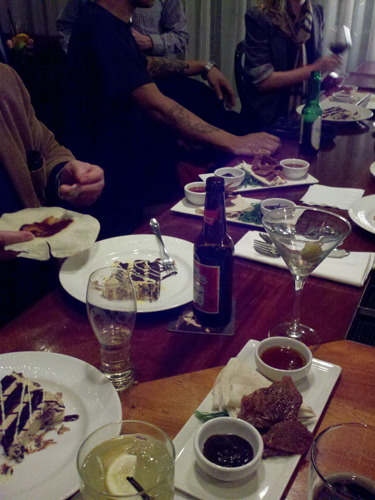
Cake and duck tacos. Note Jasper's new ink. Photo Socotra.
Tracy O’Grady and Kate Jansen outdid themselves. There were platters of duck-tacos, a delicacy that Jim had been clamoring for since they appeared briefly a month or two ago, and the layer cake was a fantasy of whipped cream and luscious sensual icing.
We sang happy birthday, of course, at least once, and the crew from the Fish and Wildlife Service joined in.
Jim scowled in happiness. “Happy birthday, Dude,” I said.
Jim tapped the bar with the bulbous stainless steel handle to the cane. “This is just what I needed,” he said with delight.
“Yep,” said Short Hair Mike. “We saw that and thought about you immediately.”
“You dicks,” said Jim.
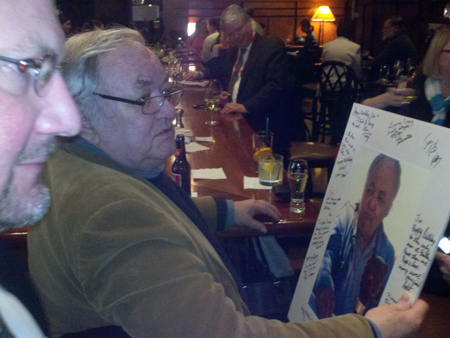
Short Hair Mike and Jim look at his card. Photo Socotra.
Copyright 2012 Vic Socotra
www.vicsocotra.com
Secret Mission
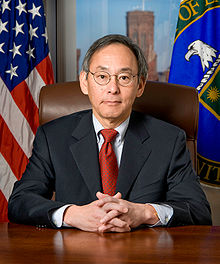 Secretary of Energy Dr. Steven Chu. Official US government photo.
Secretary of Energy Dr. Steven Chu. Official US government photo.
I want to thank those who actually noticed that The Daily Socotra took a brief hiatus.
It was actually nothing of the sort, and our team swept out of the home offices in Arlington to go undercover to evaluate public policy and support the Administration as we drive into a summer that will likely feature spiking oil and gas prices at the pump, and will accordingly become a massive elephant in any political discussion, like we are going to have anything that isn’t a political discussion.
While the mission must remain confidential for the foreseeable future, I am permitted to reveal some of the key judgments from the draft report:
1. Heinz Ketchup actually comes in a version without high-calorie fructose derived from corn. It tastes great. There may be hope for the future.
2. There has been an outbreak of extra virgin olive oil & balsamic vinegar tasting bars across the country. If you were not confused before, the myriad of flavorings available may change the way we all look at salads, and cooking overall for that matter.
That is what we can reveal at this time about the contents of the final report. But, I think we can be permitted to acknowledge some things about our sponsor. Energy Secretary Steve Chu is a fervent believer in Green Technology, and views fossil fuel emissions as a critical component in Global Warming, or Climate Change, or whatever the heck is going on, if there is actually anything going on.
No one seems to be paying the sort of attention to the issue that it deserves- or doesn’t- but I admire Dr. Chu a great deal, and he cares.
Steve is the only Nobel Laureate with whom I have recently shot the shit, with, so to speak, and he really is a great guy. I last saw him in his office at Lawrence Berkeley Labs on the hill overlooking the campus of UC-Berkeley, and even then he was insistent that finding ways to reduce our carbon footprint were the key to the survival of the planet.
Steve’s street creds in science are impeccable. He won a share of the Nobel for Physics in his landmark work on cooling and trapping atoms with laser light in 1997, and went on to direct Lawrence Berkeley and concentrate on the study of biological systems at the single molecule level.
I think you could argue that it is entirely possible that even a guy as smart as Steve might not be able to see the whole picture for the molecules- the forest-for-the-trees thing- but let’s cut to the implications of his belief system, which is quite sound. We should be more efficient in our use of energy, and he has brought a new focus to a Department that has never had a good idea of whether its mission was about nuclear weapons or the strategic petroleum reserve.
I am in favor of both, by the way, so long as they are ours, and generally opposed to those that are not. In Steve’s view, his mission is about lessening our dependence on foreign oil. Actually, more than that. Dependence on any sort of oil.
There is a problem, though. People are set in their ways. They must be forced to change in order to accomplish greater good.
That greater good is coming to us this summer in the form of $4 to $5 dollar a gallon gas, and that is without Iran and Israel slipping the noose and moving from covert action against one another and into a real shoot-em-up in the Strait for Hormuz that will cause the sort of spike in prices that will really get our attention.
In order to support Steve, the staff of the Daily set out to evaluate how we might survive in a world of vastly increased prices at the pump. Secretary Chu is a practical man, and back in September of 2008, he told the Wall Street Journal that: “Somehow we have to figure out how to boost the price of gasoline to the levels in Europe.”
That is sort of breathtaking, and hence the subject of my recent secret mission. I worked with my friends at the Hertz Rental Car Company, who have kindly permitted me to evaluate a series of vehicles under actual road conditions in all sorts of weather.
Those included Caddies and Chryslers, convertibles and cross-overs, luxury and less SUVs and even the odd rental truck. We have not, to date, investigated the most fuel efficient vehicles. That is perfectly understandable, since the electric car companies appear to be going out of business as fast as Solyndra, and the Chevy Volts are only now on the verge of having enough charge to get home from the dealership and bursting into flames down in the garage.

The Fiat 500. I took the size 42 regular. Satellite radio is very good.
The Socotra staff is eminently practical. We chose to test a car that seems to work. We took the keys to our test Fiat 500 with a great deal of excitement. The mission was to conduct urban and freeway tests to determine if we can actually live with a vehicle that is highly fuel-efficient. Key judgments follow.
This car is as cute as a motorized roller skate, and just as efficient.
We walked around the vehicle to check for pre-existing dings and dents. Our test model came with 7,500 miles on the strange circular cluster on the dashboard. The front end, where the stone ships were evident on the rich dark paint scheme combined the family feeling of the most recent Fiat models, with distinctive elements quoting the original 500.
I appreciated the round upper headlights above and main beam lights below, as well as the familiar whiskers and logo. I like the connection with tradition.
On the side, the mid-line slopes slightly at the front giving the car an impression of sturdiness, while the hind-end featured a distinctive chrome lift-gate handle similar in shape to that of a bicycle saddle. A nod to the ultimate human-driven vehicle is comforting.
Our test model featured alloy wheels for a sporty look.
On the inside, the 500 offered a welcoming, protective environment for both the driver and passengers. This is largely due to the large ring bordering the entire inner space, characteristic Italian attention to detail, quality materials, and instruments that even an Italian Cruise Line Skipper could interpret.
The keys were the first thing I noticed. The blade of the key pops out of the key-fob like a swtich-blade. One of the two keys was broken, and opened at random in my pocket.
They claim the 500 can accommodate four people. I guess that is true. They would just have to be four very small people.
But it is a cool looking car, and if you screw up and energetically drag the shifter down to “engage,” you will find yourself endlessly shifting up and down through more gerars than Carter had pills. Six were what I counted at one point, and it was fun all the way to 60-mph, or so, which you would probably not get to between Big Pink and the Office, unless you actually lived in a place connected by an interstate to where you work.
Easy to park. My God, is that cool! You can put the thing about anywhere! It handles just as easy as a roller-skate, too. Extremely fun in the urban environment.
The problem is the law of gross tonnage, of course. I strongly recommend driving with the lights on and pennants flying, since if an F-150 misses site of you under its massive hood, you would be converted to a stain on the road almost instantaneously.
Over 60-mph, the 500 took me back to my days flogging a VW Beetle. It was entirely possible to get the car up over highway speed. In those days, the Michigan Patrol gave you fifteen miles an hour over the basic interstate speed before they pulled you over, and the 500 shares that strange disassociated feeling with the ancient Bug: at the edge of the envelope, you feel…well, at the ragged edge of the envelope.
I managed to drive the 500 over hill and dale, in the city, and with a dash across country.
I have to say I had a ball in the car, and was delighted to find that after more than 250 miles, I tanked up (at $3.45 a gallon) at less than a double-sawbuck.
I handed the keys back, serene in the knowledge that there are some real alternatives to the massive gas guzzling behemoths like my P-71 Crown Vic Bluesmobile.
If we actually get to $8 per gallon as Steve would like, I might actually drive one. I have to say, I do prefer the comfort of knowing that at 85-miles an hour in the Police Cruiser, I still have another 50mph of excess capacity, just in case. Plus, it is paid for.
That might be in the final report. We will have to see what Steve says.
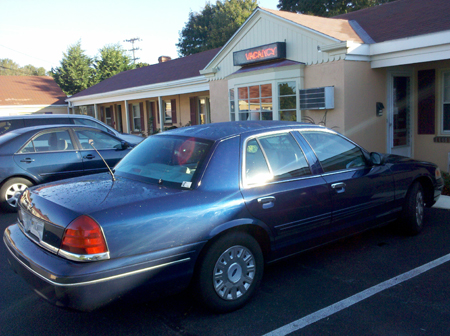
Copyright 2012 Vic Socotra
www.vicsocotra.com
Walters
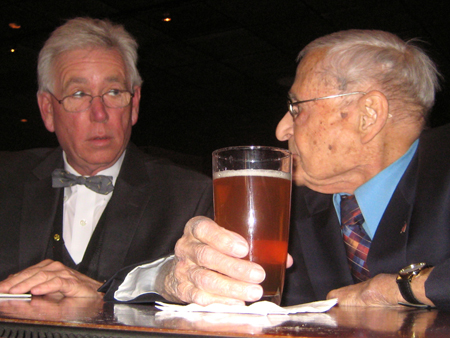
It was getting to that point in the evening that I wanted to think about navigating back to Big Pink from Willow. Mac was nursing his second beer, happy to be out and about and encircled by admirers. Liz-with-an-S kept filling up my glass.
“Who is in charge of ONI now?” asked the Admiral. “I want to know who to call to see if we can get my 28 hours of oral history reviewed and declassified.”
“Who’s on first,” growled Jim from his customary place at the apex of the Amen Corner.
The intelligence professionals conferred around him, as he scowled and finished another Bud. We thought we identified a person we might call in the morning to put some pressure on, and then the nice blond lady from ONI suggested that Mac might like to see the Pentagon again now that it has been reconstructed, blown up, and reconstructed again.
“I would like that,” he said.
“We can even show you the D.O.C. Cook remote delivery facility.”
“Heck, I knew Doc when he was a man and not a loading dock. Hell of a guy. He was the Mayor of the Pentagon, and got a chance to comment on virtually every directive or instruction that affected his building. He got a chop on the DNI establishment, too.”
“I remember when they stripped me of my Pentagon access badge,” I said. “It was a long walk down to the Third Corridor exit with an “escort required’ badge that I had to give to the guard. That is a cold feeling after having worked there for eight years of my life.”
“Easy come, easy go,” said Jim.
“We’ll get you in,” said the girls from ONI in unison.
“I can push the wheelchair,” I said to Mac, and he smiled broadly.
“You may not need to,” he said. “I have been feeling so good that I went back to work at Arlington Hospital last weekend. First time in a year. “
“Way cool, Sir. You are radiating vitality these days. It is great to see. What do you do at the hospital?”
“Oh, a little of this and that. We write summaries of upcoming activities and public affairs stuff. I had a three hour interview with the Public Affairs Officer at Joint Base Henderson Hall-Myer about our Alzheimer’s Support Group. She was going to put an article in the Penta-Gram.”
“Oh, the free rag?”
“It gets around.”
“You sure helped me get through some strange times with Dad. It was very strange, but your perspective made me know we were not alone in this thing.”
“You are definitely not. But as we were saying, Rufus Taylor established the Naval Intelligence Dining In when he was director, and the tradition continued every year after that until 2008. The one you went to the other night might be the re-emergence of a gradn tradition.”
“Mike Rindskopf relived Rufus as the DNI, and he continued the tradition, right?”
“Sure did. Rufus got a third star and then went up to CIA to be the Deputy Director.”
So, Rufus was DNI, and then he was sent up relieve that blabby Vernon Walters.” Mac sat up straight. “Walters. That reminds me of another interesting guy. Walter Lionel Pforzheimer.” He stopped to spell out the last name for me, something he does to ensure that I don’t stray too far afield. I finished one napkin of notes and started another.
“Who was he?”
“The Chief of the library at CIA. He was a legend. He loved his country, he loved his books, he loved his Yale; he loved his Agency; and he loved his extended intellectual and blood family. He had a place at the Watergate- one of the two-story units. It was completely filled with books about the intelligence community worldwide. Top to bottom. It was amazing.”
“Running a classified library in the days before the internet is a glimpse into a world that doesn’t exist anymore,” I said.
“Yes, his passion for books was remarkable. Walter’s generation of Yale men were different than the ones you know now, the ones who head for Wall Street as fast as they can get there. Walter’s generation knew about service. He liked to quote Wendell Willkie’s phrase that “America is the Land of the Free because it is also the Home of the Brave.”
“I have never heard of him,” I said.
“You probably wouldn’t have. No reason. But Walter was there at the very beginning. Hew had been Air Corps during the war, and afterwards was recruited for the Central Intelligence Group, the CIG, successor to the OSS and precursor to the CIA.”
In fact, he helped craft the CIA charter. But what he loved was books. I was at his place one time and he showed me something I still will never forget.”
“What was that?” I asked, sipping from the glass that Liz-S would not quite let me get to the bottom of, something very much like these chats.
“It was a document from the first President, actually signed by George Washington when he was commanding the Continental Army in the field in 1777. It was handwritten, and I held it in my own hands.” The Admiral looked, up, quoting from memory: “The necessity of procuring good intelligence is apparent and need not be further urged.” That was the first thing he collected.”
“That is amazing,” I said. Mac nodded.
“From there, Walter’s library just grew and grew. He was lucky to combine his passion with his profession. In 1956, Allen Dulles created the CIA’s Historical Intelligence Collection, with Walter as its first curator. He stayed there for eighteen years, and was still there when I retired from the Navy and went to work up there. The library had grown to more than 20,000 books.”
“Then he retired?” Mac nodded. “But he is still a force in the intelligence community, since he basically established the terms of reference for how we study the business. Every course taught in the CIA training syllabus owes something to Walter.”
“Sounds like the most famous guy I have never heard of,” I said.
“Well,” said Mac. “You have now,” and he finished his second beer.
Copyright 2012 Vic Socotra
www.vicsococotra.com
VD at the Amen Corner
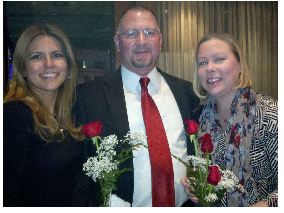
The Lovely Bea, Short Hair Mike and Pretty Jamie. Photo Socotra.
Short Hair Mike is a romantic, which is a refreshing quality in an Army Ranger. Pretty Jamie showed up a little before him at the Willow, and checked her phone for network time. “Is he late for the date?” I asked.
“According to my phone, he is.” She looked up as The Lovely Bea entered through the dark-wood framed glass doors to the bar.
“Hello, Lovely Bea,” I said, brushing both cheeks with an air kiss. “Are the boys taking you buys to dinner? That is so romantic.”
Short Hair Mike came up to the Amen Corner from the garage end of the restaurant holding a box with two floral arrangements, each in a little bud vase with plush animals clinging to the neck.
“It looks like that little lion is humping the flowers,” said Jim.
“You are so romantic,” I said. “Did you get Mary anything for Valentines Day?”
“Yes,” he said. “A six-pack of Budweiser.”
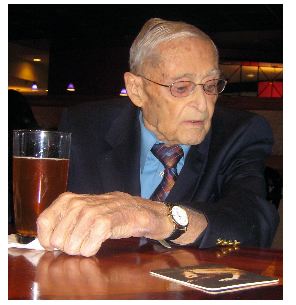
Mac smiled broadly. “So I have been thinking about it and you have the year of the first Dining In wrong.”
“I was moving pretty quickly that morning,” I responded. “It is a first rough draft, after all.”
Mac nodded, and pursed his lips. “Thinking about it, Rufus Taylor staged the first Naval Intelligence dining-in. I was at FIRST Fleet then, in San Diego. So that places it when he was DNI and that was much later.”
“So you think ’55 was not the right year?”
“No, definitely not. Ruf did not become DNI until the Kennedy Administration,” replied Mac. I was at the Naval Intelligence School over at Anacostia in the middle 50s. I was still a Lieutenant Commander at the time. I think I was, forever. I was just above the cut line for the biggest promotion the Navy ever had in ’46. It was great to make it, but then promotions stalled out. It seemed like forever.”
“You said it was a good turn-out. How many of us were there?”
“There certainly were not as many as we have today. That was before the Air Intelligence crowd was transferred out of the unrestricted line and into the Special Duty community. Promotions were horrible for them in the URL- they competed against the pilots and you know how that turns out.”
“That is what they are doing again, isn’t it?
“Maybe. There is a lot of uncertainty on that score. I am keeping my mouth shut on that one. I have no way of knowing now how many officers made up the community before the Vietnam conflict. Maybe three or four hundred, but it was a good show. Rufus held it at the Officer’s Club at the Gun Factory. I think it was fairly crowded. It was Ruf’s idea of building moral for the Intelligence Community, and over the next forty-four iterations did just that.”
“I was Mr. Vice in every grade from LCDR on. I think I was the only retired officer to have to do it, too. Tony finally gave me a certificate saying I didn’t have to do it again. Mr. Vice Emeritus, it said.”
“Ruf and I were together for the first time at Arlington Hall at the Navy Field Operational Intelligence Office. We used to walk around the grounds there, and I urged him to transfer over to the 1630 Intelligence Community.”
“You told me he started as a Cryppie. So did Jerry Clark. He retired as a Captain, but he went all the way to SES-6 or whatever the highest grade is. He was Deputy Director of DIA for years under Pat Hughes.”
“I finally made Captain, but I had to do it as a civilian,” said one of the pretty ONI ladies.
“I did it as a civilian all the way,” said her blond pal with a smile.
“Rufus Taylor was a character,” said Mac. “He used to keep a bible in his desk drawer,” said Mac. “He used to work a biblical quotation into all his Naval Messages.”
“That wouldn’t be permitted these days,” I said. “Not PC. We might convey the idea that somehow one religion is better than another, even if we are in a war with some religious nut-cases.”
“Seems like the wars are ending anyway,” said Old Jim, draining his Bud. ”I assume we are declaring victory.” He waved as Liz-S for another beer. Liz was looking a little frantic with the Valentines Day crowd swarming the bar, and poor Katia had just got off an airplane and looked exhausted.
“Sometimes that what you have to do,” said Mac. “Rufus retired down to Southern Pines in North Carolina. When he passed, I assumed there would be a big religious ceremony. I was shocked to hear that his wife said they were un-churched, and there would be no obit, no ceremony, and the Duke University Medical School got Ruf’s body.”
“Un-churched?” I said. “I don’t think I have heard that word in years.”
“Yeah, I was sort of amazed that a man who quoted the Bible in his messages did not have any interest in it.”
“It is like the description in the on-line dating sites,” I said. “Spiritual, but not religious.”
“Well, certainly any situation under Heaven can be described in the Good Book.”
“I like the where the kids are tease a holy man, and he sets bears to tear them to ribbons.”
“There is something to be said for that,” said Mac. “When Ruf and I were assigned to AFSA at Arlington Hall he would send periodic messages with the biblical quotes in them. He was Y1 and I was Y1E. He was also the Executive Secretary of a DCI subcommittee on “Sanitization.” Morey Hellner was part of that thing, too,”
“So the community has been worried about covering sensitive sources and methods for a long time.”
“Oh my, yes. I have told you that we issued Secret-level and even unclassified reports based on extremely sensitive JN-25 Japanese Naval Code decrypts. We just didn’t attribute the information to where it came from.”
“I heard a very senior retired officer get real excited about that when he read the account of it in your book. He seems to think it is an approach whose time has come again.”
“Nothing new under the sun,” said Mac.
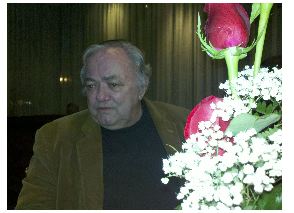
Jim looked on impassively, sandwiched between the ONI Ladies and Mac and I as he presided at the apex of The Amen Corner. “I have not understood anything you guys have said in the last ten minutes.”
“That is OK,” I said. “We don’t understand it either. For example, are we still 1630s? I know there is a retired designator- I forget what it is.”
“What the hell is a designator?” growled Jim.
“It is a way to categorize the officer corps,” said mac, taking a sip of his second Bells Lager. “The digits all mean something,” said Mac. “the ‘one’ refers to unrestricted or restricted line. The second and third digits described the specialties within the restricted line- cryppies were 161x, intelligence weenies were 163x and so on.”
“Then, with the establishment of the Corps of Information Dominance, we became 1830s.”
“Actually, you became an 1833,” said the blond ONI lady. “The last digit indicates your status. ‘Zero’ means regular, active, and ‘One’ means Warrant, ‘Two’ means temporary regular officer who had permanent enlisted status. The ‘Three’ means ‘Regular office on the retired list.”
“Thanks,” I said. “I always wondered about that. But do we know if they reclassified us as 1833s or are we still 1633s?”
“You would have to ask someone at BuPers in Millington,” said Mac. “I don’t really care. I don’t think they are going to call any of us back.”
“You are all crazy,” said Jim.
“Probably,” said Mac with a smile, taking a sip of lager. “Rufus held a position under that diesel submarine officer Fritz Harlfinger. Rufus was know as the Director of Intelligence- Op-922, but not the Director of Naval Intelligence. Harlfinger kept the DNI car and anything else good he saw laying around the fifth deck of the Pentagon.”
“It must have been liberating to have an intelligence officer as the Director of Naval Intelligence.”
“Yes, Ruf took over from “Rebel” Lowrence, a submarine ace from the Pacific War. And wait- of course. The first Dining In was in 1964, the year after Rufus took over. That makes sense. I don’t know where you came up with 1955.”
rly and I had not had my coffee,” I said a little defensively. “And the Dining In was the night before.”
“Rufus was relieved by Mike Rindskopf, who just died last fall.”
“I wrote an obit for him. He was a hell of a guy- submariner though. It seemed like there wasn’t any place in Admiral Hymen Rickover’s all-nuclear Navy for the old pig-boat guys, heroes or not.”
“True. Mike was followed by “Lucky” Fluckey, the Congressional Medal of Honor winner.”
“I wrote one for him, too,” I said. “The Galloping Ghost of the China Coast. Amazing stories about his exploits. His crew sank a train on the island of Honshu late in the war- first land raid on the Home Islands.”
“Yep,” Mac nodded. “Then, Frank Murphy, a Captain sitting in and then that pompous fellow Fritz Harlfinger. If it had not been for Bud Zumwalt’s special relationship with Rex Rectanus, I don’t know what would have happened.”
“One thing is pretty certain,” I said. “The business of the technical collection of intelligence from earth orbit, and the assessment of validity in sources and methods really take ssomeone who does that for a living.”
“Precisely why Bud picked Rex and his DNI.” Mac took sip of beer. “And it was intelligence officers from there on, until now.”
“Do you think that the consolidation of the community is a good thing? They say that the Radio Wars that were raging since World War Two are over, and the Operators are happy with that.”
“They just don’t understand it. The last time an Operator thought he knew everything was Richmond Kelly Turner, and he withheld the intelligence that might have prevented the disaster at Pearl Harbor.”
“Arg,” I said. “I am not going to open up that particular can of worms again. Do you think it could happen again?”
Mac shook his head. “It did happen again, remember?”
“I wonder what Ruf Taylor would have said about that.”
“He might have quoted King 2:23,” said Mac.
“I am not so good on my old Testament,” I said, draining the last of this particular glass of happy hour white, a modest Pinot Grigio. “How does that one go?”
“As I recall, Elisha was going up to Bethel, and as he was going along some children came out of the town and mocked his bald head.”
“That doesn’t seem charitable.”
“It wasn’t. Elisha cursed them in the name of the Lord, and then two-she bears came out of the woods and tore up 42 kids.”
“Really? That seems like sort of an over-reaction.”
“Sometimes extraordinary action is required. You can look it up. I think Ruf could have written a good message around that. But did I mention Walter Lionel Pforzheimer?”
“Who?”
“The grand old man of the library at CIA.”
“No, I don’t think so.” I grabbed another napkin, signaled Liz-S for reinforcements and waited for the Admiral to tell me the story.
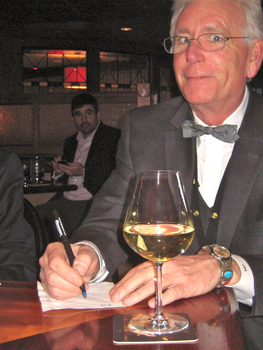
Copyright 2012 Vic Socotra
www.vicsocotra.com
